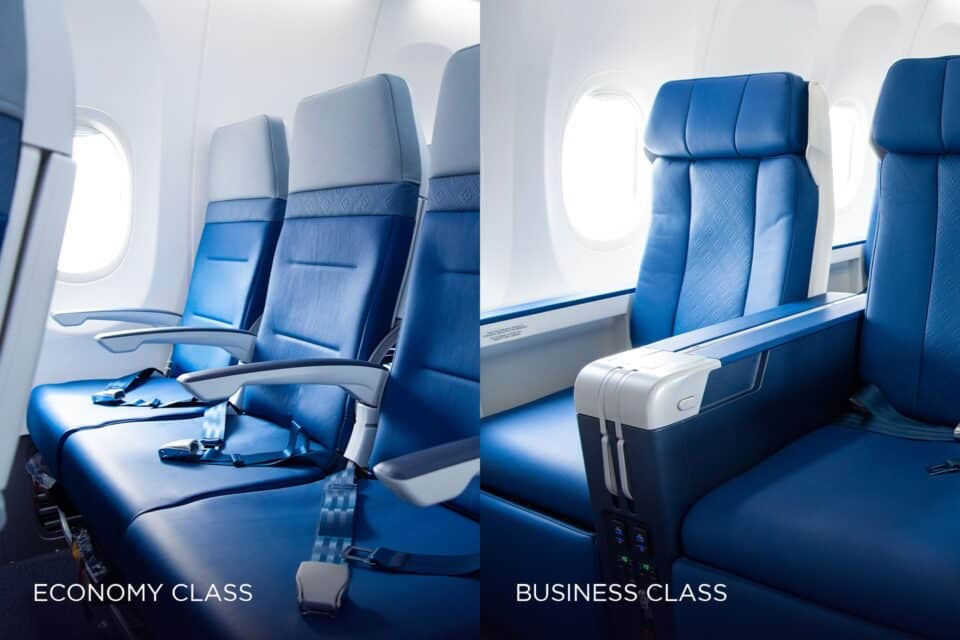Aerospace
Duckworth wants to change how airlines downsize seats.
Bravo: The FAA may impose strict guidelines for airlines that reduce seat size

Sen. Tammy Duckworth of the Democratic Party unveiled legislation on Thursday that would force the Federal Aviation Administration to rethink how it tests aeroplane seats. The Emergency Vacating of Airplane Cabin (EVAC) Act, which is a part of proposed legislation, would require the FAA to investigate the effects of carry-on luggage, elderly passengers, people with disabilities, and children on aircraft evacuation timeframes.
Airlines have been reducing the size of their seats for many years, which prompted Congress to establish new guidelines in 2018 to guarantee that passengers can board and deplane an aircraft in no more than 90 seconds. However, a lot of people have criticized the tests for failing to take things like passengers with disabilities into account.
In testing under conditions that are not representative of real-world situations, Duckworth said, “That worries me.” “Almost every seat on aeroplanes is currently filled when they take off. Because of how modern commercial aviation operates, you cannot just practise evacuating an aircraft that is only 30% full.”
Duckworth, who lost both of her legs while serving in Iraq, doesn’t think she could leave a plane in less than 90 seconds “under the normal settings” she usually travels in.
The FAA said in a statement to CBS News that it is still considering the thousands of public comments on airline seat sizes that it received earlier this year. More than 200 comments including the term “torture” were included in the more than 26,000 submissions the agency received. However, the FAA claims that their testing followed to the standards set forth by Congress.
Malaysia regains US FAA’s Category 1 safety rating(Opens in a new browser tab)
According to studies conducted by the FAA in 2019 and 2020, “seat size and spacing had no detrimental effects on the success of emergency evacuations.” The volunteer passengers in the simulations did have a variety of seat sizes, but they did not have to deal with things like smoke, darkness, or luggage, and they travelled in groups of 60, which was far from a full plane.
Additionally, all participants in the simulations were healthy adults under the age of 60. Steve Dickson, who headed the FAA at the time, conceded that the findings were “helpful” but “not necessarily decisive.” A crowded plane does affect the amount of time it takes for an evacuation, according to consumer advocates and some former airline employees, including Captain Chesley “Sully” Sullenberger, the pilot responsible for the 2009 “Miracle on the Hudson” emergency landing.
“On our flight, it took more than three minutes to get everyone off the plane, in part because the water was quickly filling the aircraft from back to front. But also because it was actuality and our aircraft was full, “added Sullenberger. Airlines declared that safety was their top concern and that they would keep collaborating with the FAA.

Aerospace
Boeing Transfers Rocket Stage to NASA, Paving Way for Human Moon Mission

Boeing has achieved a significant milestone by providing NASA with the second core stage of the Space Launch System (SLS) rocket.
This crucial component, crafted at NASA’s Michoud Assembly Facility (MAF), is set to propel the Artemis II crew into lunar orbit, marking humanity’s return to deep space after a 50-year hiatus.
The monumental Boeing-built rocket stage, the largest element of the Artemis II mission, will embark on a journey aboard the Pegasus barge, traveling 900 miles to NASA’s Kennedy Space Center.
Comparison of two legendary aircraft B777x vs B747 aircraft:Click here
Upon arrival, it will be meticulously integrated with other essential Artemis II components, including the upper stage, solid rocket boosters, and NASA’s Orion spacecraft within the iconic Vehicle Assembly Building. This intricate integration process is a vital step toward the eagerly anticipated Artemis II launch, slated for 2025.
“Boeing-built products helped land humankind on the moon in 1969, and we’re proud to continue that legacy through the Artemis generation,” remarked Dave Dutcher, vice president and program manager for Boeing’s SLS program. “Together, with NASA and our industry partners and suppliers, we are building the world’s most capable rocket and paving the way to deep space through America’s rocket factory in New Orleans.”
NASA, Lockheed Martin Reveal X-59 Quiet Supersonic Aircraft:Click here
The delivery of Core Stage 2 marks a significant achievement in the evolution of the SLS rocket. Towering over 200 feet and powered by four RS-25 engines, this core stage, coupled with two solid-fueled booster rockets, will generate a staggering 8.8 million pounds of thrust. This immense power is crucial to launching Artemis II and future missions into the vast expanse of space.
The SLS rocket stands unparalleled in its capability to transport both crew and substantial cargo to the moon and beyond in a single launch. Its extraordinary capacity will facilitate the delivery of human-rated spacecraft, habitats, and scientific missions to destinations including the moon and Mars, ushering in a new era of space exploration.
-

 Travel1 week ago
Travel1 week agoAir India to Expand US Operations with Three New Routes After a Decade
-

 Travel2 weeks ago
Travel2 weeks agoWhy We Should Avoid These Stamps in a Passport
-

 Airlines1 month ago
Airlines1 month agoInvestigations Reveal Fake Chinese Titanium in Boeing and Airbus Jets
-

 Tech4 weeks ago
Tech4 weeks agoChina’s CATL Plans 1,800-Mile Electric Plane Launch by 2027
-

 Airport3 days ago
Airport3 days agoTop 10 Largest Airports in the World by Size
-

 Aerospace4 weeks ago
Aerospace4 weeks agoChina’s Fighter Jets Turn Wings into Autonomous Drones
-

 Airlines4 days ago
Airlines4 days agoAir India Rolls Out A350s for Delhi-New York JFK and Newark Routes
-

 Defence3 weeks ago
Defence3 weeks agoBoeing Enhances Chinook with New Engines and Block II Upgrades at $96 Million







